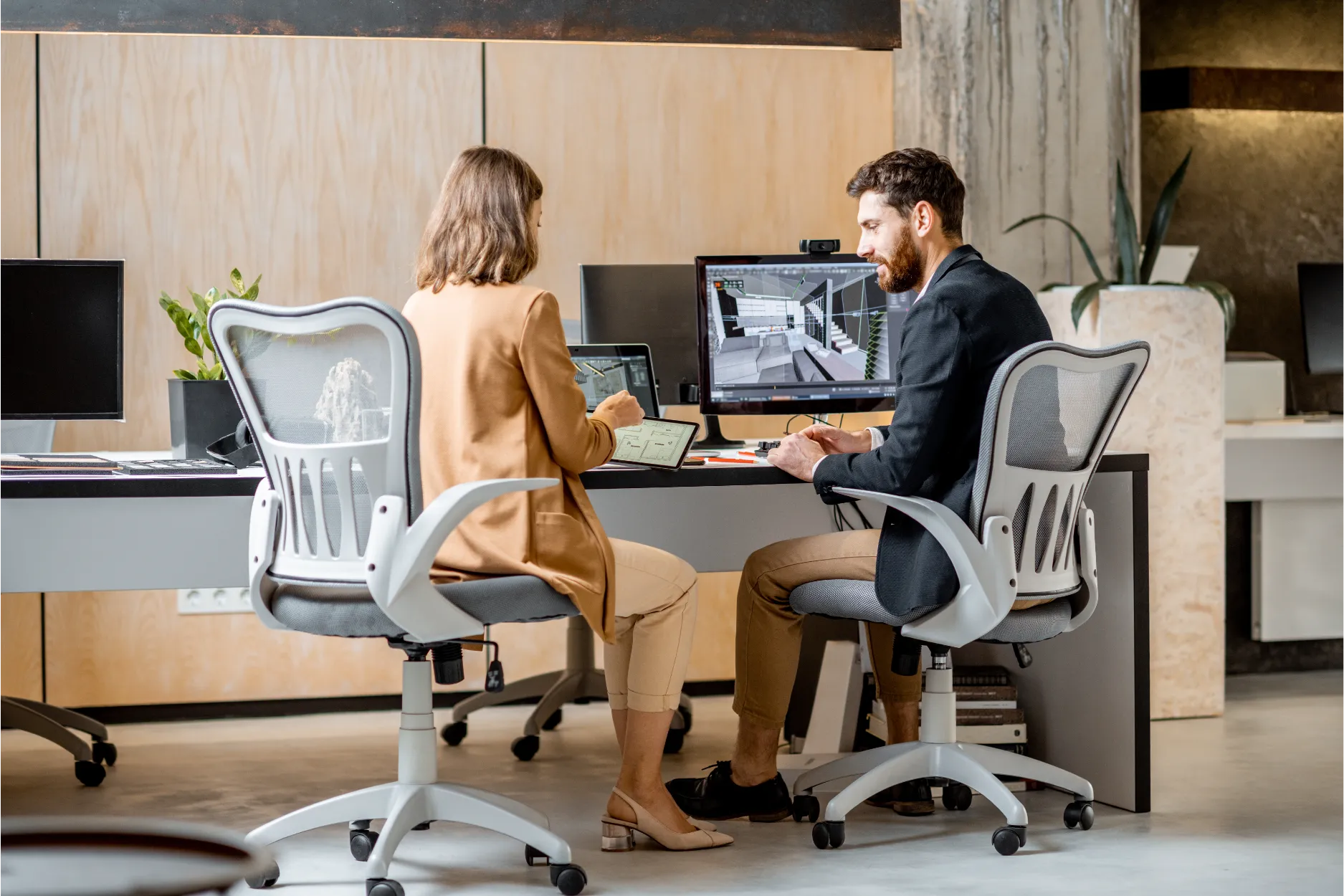
In the ever-evolving world of interior design, staying ahead of the curve is essential for success. As technology continues to shape the way we live and work, interior designers are embracing its power to provide clients with immersive 3D experiences. In this guide, we'll explore how interactive 3D walkthroughs are transforming interior design, shedding light on 3D floor planning, the digital revolution in interior design, and the profound impact of technology on the industry.
Digital transformation isn't just a buzzword; it's changing the way we approach interior design. In the past, designers relied on sketches and physical samples to convey their ideas. Now, thanks to 3D floor planning, we've entered a new era where clients can visualize their dream spaces in three dimensions.
Think about it. Traditional 2D floor plans could sometimes feel like deciphering a cryptic code. But with 3D floor planning, it's like a switch from black and white to full-color. Designers can create a detailed, true-to-life version of your space, complete with furniture and decor. It's like stepping into the future, offering clients a much clearer understanding of the design's potential.
Now, let's dive into how technology bridges the gap between a designer's vision and a client's understanding. Enter interactive 3D walkthroughs—these aren't just fancy presentations; they're windows into your future home.
Imagine standing in your current space, but with the magic of technology, you can step into your future home. You can walk around, see how natural light fills the rooms, and experience the atmosphere. It's like a sneak peek into your dream space, and it's incredibly helpful. This immersive experience empowers clients to make informed decisions about colors, textures, and layouts. It's like trying on clothes before you buy them; you get a sense of how things fit before committing.
Now, let's delve deeper into why 3D visualization is such a game-changer in interior design. It's not just about aesthetics; it's about creating an emotional connection.
Remember the excitement of shopping for furniture in a store? You could touch, feel, and test it before making a choice. It was a sensory experience. But in the digital realm, that tactile experience was missing. Not anymore.
With 3D visualization, designers can bring your furniture choices to life within your design. You can see how that cozy sofa fits into your living room, and you can almost feel yourself sinking into it. This isn't just about making decisions; it's about enhancing your overall experience.
Now, picture being able to "walk" through your new home before it's even built or renovated. It's like watching a trailer for a blockbuster movie before it's in theaters. This is the magic of the 3D experience.
You can see how natural light plays across the rooms at different times of the day. You can feel how your chosen color scheme sets the mood. You can virtually touch and feel the materials and textures. It's like getting a sneak peek into the future, and it's incredibly insightful. It helps you make decisions that are impossible to make with just drawings or static images.

Now, let's talk about the practical side of how this digital revolution is changing the interior design business.
Effective communication is at the heart of any successful design project. With interactive 3D walkthroughs, designers and clients can communicate more clearly and efficiently. Changes can be made in real-time, reducing misunderstandings and costly mistakes.
In a highly competitive industry like interior design, staying ahead of the curve is vital. Embracing technology gives you a significant advantage. Clients nowadays are tech-savvy and expect cutting-edge solutions.
Interior design projects involve countless decisions, from choosing paint colors to selecting furniture and lighting. It can sometimes feel like navigating a maze. However, 3D visualization streamlines this process. You can see the impact of your choices in real-time, leading to quicker approvals and smoother project timelines.
As technology keeps evolving, so does the future of interior design. Imagine the possibilities of augmented reality (AR) and virtual reality (VR). These are the next frontiers.
With AR, you could use your smartphone to see how that new coffee table fits into your living room. With VR, you could put on a headset and virtually step into your new home, exploring it as if you were physically present. It's not science fiction; it's the next big thing. These technologies will make the design process even more immersive and client-focused.
Read Also: Wallpaper Visualizer Tool: Best 7 Strategies To Adopt For Decor Businesses
So, what's the bottom line here? Interior design is undergoing a digital makeover, and interactive 3D walkthroughs are leading the way. It's not just about staying up-to-date; it's about providing a superior client experience, running your business more efficiently, and positioning yourself as an industry leader.
In this digital age, technology in interior design isn't just a trend; it's a game-changer. So, take the leap, explore the world of 3D visualization, and open up new possibilities for your interior design journey. Your dream space is just a click away, and technology is the key to unlocking it. Your designer, equipped with 3D tools, is ready to make your dream a reality, and together, you'll create spaces that feel truly human, just as they should.
FAQs
Interior designers can use various software and platforms like SketchUp, Blender, or specialized interior design software with 3D visualization capabilities. Some even opt for professional 3D rendering services to create high-quality walkthroughs.
They help designers effectively communicate their vision, making it easier for clients to understand and approve design concepts. This visual clarity enhances collaboration and ensures everyone is on the same page.
Interactive 3D walkthroughs are immersive digital presentations that allow clients to virtually explore and navigate through interior designs. They provide a real-time, interactive experience of a space before it's built or renovated.